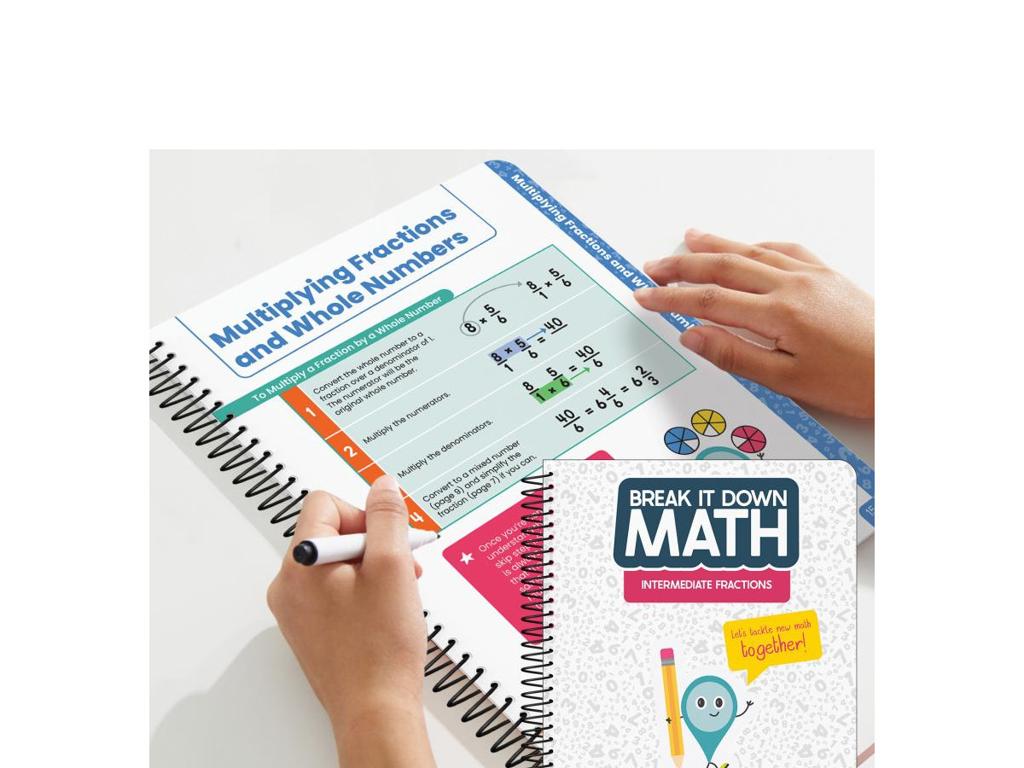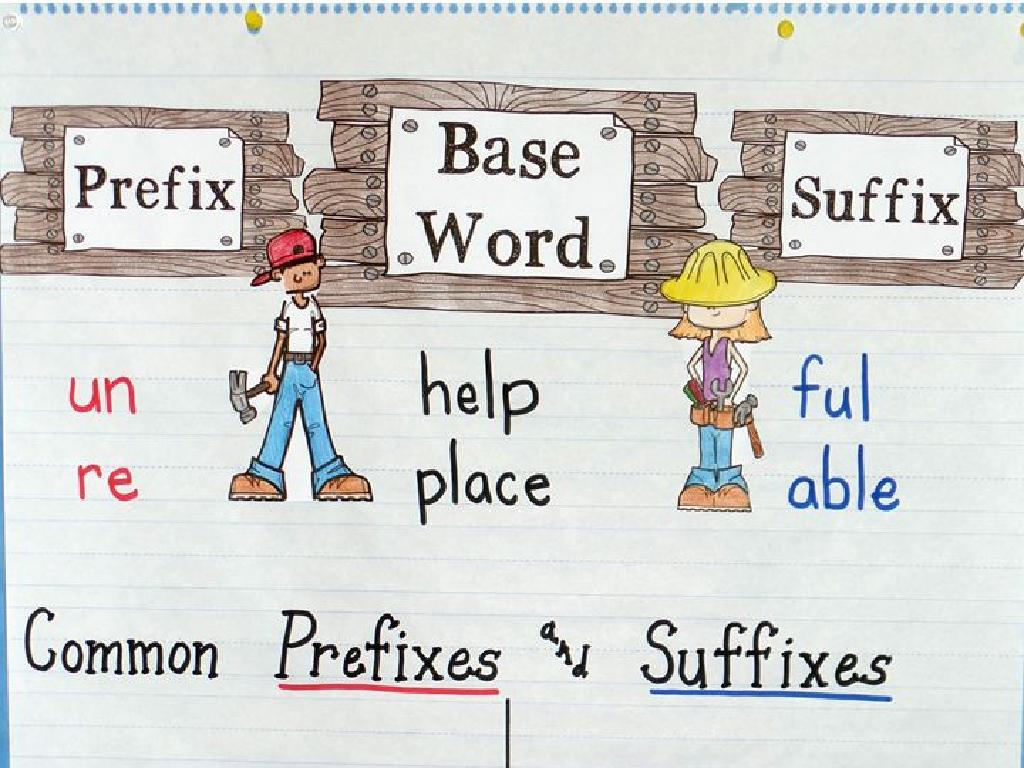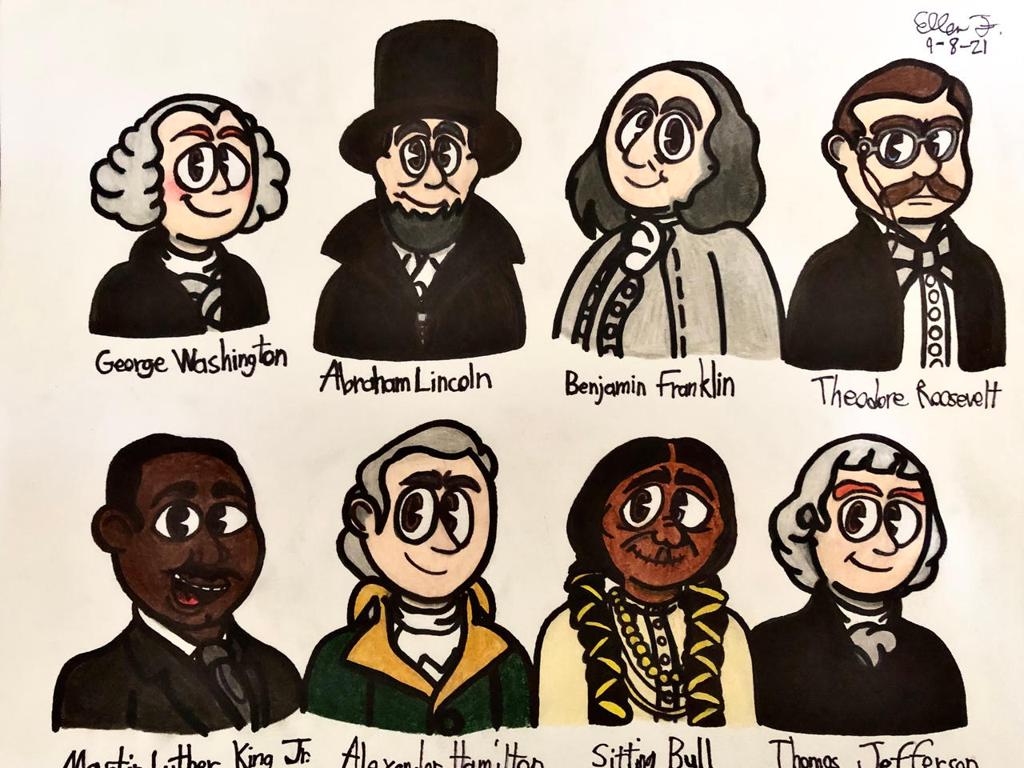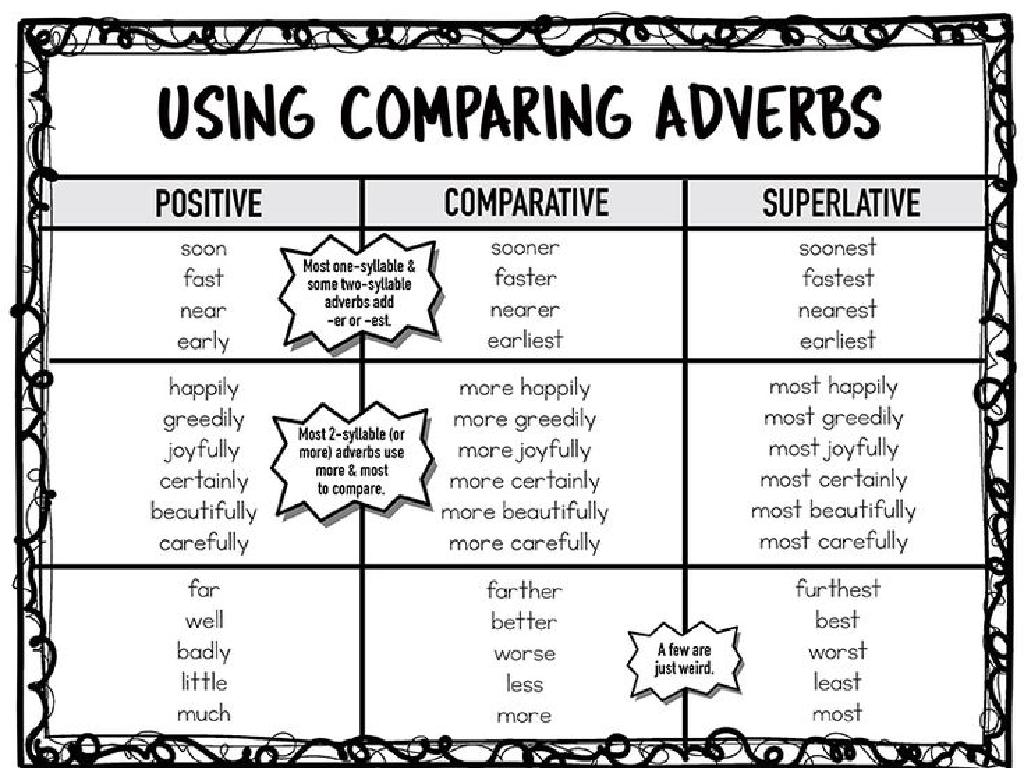Use The Correct Subject Or Verb
Subject: Language arts
Grade: Third grade
Topic: Verb Types
Please LOG IN to download the presentation. Access is available to registered users only.
View More Content
Today’s Adventure: Subject-Verb Agreement!
– Discover the sentence’s heart
– Every sentence has a subject (who or what) and a verb (action).
– Learn about subject-verb agreement
– Subjects and verbs must agree in number: ‘He runs’ vs. ‘They run’.
– Understand why it matters
– Using the correct subject and verb helps us communicate clearly.
– Practice makes perfect
– We’ll do fun activities to get better at matching subjects and verbs!
|
This slide introduces the concept of subject-verb agreement, which is crucial for constructing grammatically correct sentences. Emphasize that the subject is the person or thing doing the action, while the verb is the action itself. Explain that they must agree in number, meaning if the subject is singular, the verb must also be singular, and the same for plural. Highlight the importance of this agreement for clear communication. Engage the students with interactive activities where they can practice this skill, such as matching subjects to verbs or correcting sentences with subject-verb disagreement.
Verbs: Action Words in Our Sentences
– Verbs show action or state of being
– Verbs can be actions like ‘run’ or states like ‘is’
– They tell what the subject does
– If a person or thing is the subject, verb tells what they do
– Examples: ‘run’, ‘jump’, ‘is’, ‘are’
– ‘She runs’, ‘Dogs jump’, ‘He is happy’, ‘They are here’
|
This slide introduces the concept of verbs to third-grade students. Begin by explaining that verbs are words that show action or a state of being. Emphasize that verbs are an essential part of a sentence because they tell us what the subject (person, place, thing, or idea) is doing. Use simple and relatable examples to illustrate verbs in action, such as ‘run’ and ‘jump’ for actions, and ‘is’ and ‘are’ for states of being. Encourage students to come up with their own examples of verbs and use them in sentences. This will help them understand how verbs function within the context of a sentence and how they relate to the subject.
Meet the Subject
– What is a subject in a sentence?
– It’s who or what the story is about.
– Subjects can be many things
– A person, place, thing, or idea can be a subject.
– Example: ‘The cat runs’
– ‘The cat’ is the subject doing the action.
– Practice finding subjects
|
This slide introduces the concept of the subject in a sentence, which is foundational for understanding sentence structure. Explain that the subject is the main focus of the sentence and is usually a noun or pronoun. Use simple, relatable examples to illustrate subjects as people, places, things, or ideas. For instance, in the sentence ‘The cat runs,’ ‘The cat’ is the subject because it’s who the sentence is about. Encourage students to practice by identifying subjects in sentences both from literature and their own writing. This will help them understand the role of the subject and how it relates to the verb.
Making Subjects and Verbs Agree
– Subjects & verbs must match in number
– Singular subjects need singular verbs
– If you say ‘he runs’, ‘runs’ is singular because ‘he’ is just one.
– Plural subjects require plural verbs
– For ‘they run’, ‘run’ fits because ‘they’ means more than one.
– Practice makes perfect
|
This slide introduces the concept of subject-verb agreement, which is crucial for constructing grammatically correct sentences. Emphasize that verbs must match the number of their subjects; singular with singular, plural with plural. Use examples like ‘The cat meows’ versus ‘The cats meow’ to illustrate the point. Encourage students to listen to the sounds of sentences to catch mistakes. Provide exercises where students can practice matching subjects and verbs correctly. For homework, ask students to find sentences in their favorite books and identify if the subjects and verbs agree.
Singular and Plural Subjects and Verbs
– Singular subjects need singular verbs
– ‘The dog barks’ has a singular subject and verb
– Plural subjects use plural verbs
– ‘The dogs bark’ shows a plural subject and verb
– Verbs change with the subject number
– Like ‘dog’ becomes ‘dogs’, ‘barks’ becomes ‘bark’
– Practice matching subjects and verbs
|
This slide introduces the concept of subject-verb agreement to third-grade students. It’s crucial to highlight how the form of a verb changes depending on whether the subject of the sentence is singular or plural. Use simple, relatable examples to illustrate this point. For instance, one dog barks (singular), but multiple dogs bark (plural). Encourage students to notice the pattern of adding ‘s’ to make nouns plural and removing ‘s’ from verbs when the subject is plural. In the next class, plan activities where students can practice creating sentences with both singular and plural subjects and matching them with the correct verb forms.
Let’s Practice Together: Choosing the Right Verb!
– I’ll show sentences with two verb choices
– You’ll help pick the correct verb
– Example: The apple (falls/fall) from the tree
– ‘falls’ is correct because ‘apple’ is singular
– Let’s figure out which one is right!
|
This slide is an interactive class activity designed to help students understand subject-verb agreement. Display sentences with two verb options and ask the students to choose the correct verb based on whether the subject is singular or plural. Use the example provided to explain how ‘falls’ is the correct verb because ‘apple’ is a singular noun. Encourage students to think about the subject of the sentence before deciding on the verb. Activities can include more examples like this, a mini-quiz, or a game where students hold up cards with the correct verb. This will help reinforce the concept in a fun and engaging way.
Your Turn to Shine: Choosing the Right Verb!
– Receive your worksheet with sentences
– Select the correct verb for each
– Is it ‘runs’ or ‘run’? Choose wisely!
– Check if the subject is singular or plural
– Singular subjects need singular verbs
– Match verbs correctly to subjects
– Plural subjects agree with plural verbs
|
This slide is an interactive activity for students to apply their knowledge of subject-verb agreement. Distribute worksheets with sentences that have missing verbs and ask students to fill in the blanks with the correct verb form. Remind them to determine whether the subject of each sentence is singular or plural, as this will affect the verb form they choose. For example, ‘He runs’ versus ‘They run’. Encourage students to say the sentences out loud to hear if it sounds correct. This exercise will help reinforce their understanding of verb conjugation and agreement in a practical context. Offer assistance as needed and praise correct answers to build confidence.
Class Activity: Verb Hunt
– Explore the classroom on a Verb Hunt
– Identify objects as singular or plural
– Is it one item or more than one?
– Write sentences with correct verbs
– Make sure the verb matches the subject in number
– Share your sentences with the class
|
This interactive activity is designed to help students understand subject-verb agreement through a fun and engaging ‘Verb Hunt.’ Students will move around the classroom to find objects or pictures and determine whether they are singular or plural. They will then write sentences using the correct subject-verb agreement based on their findings. For example, ‘The clock ticks’ for a singular object or ‘The clocks tick’ for plural. After writing their sentences, students will have the opportunity to share with the class, allowing for peer learning. Teachers should circulate to provide guidance and ensure understanding. Possible variations include pairing students, using flashcards, or creating a verb agreement chart as a reference.
Mastering Subject-Verb Agreement
– Congratulations on your hard work!
– Subjects and verbs must match
– If the subject is singular, the verb must be too. Same for plural.
– Practice makes perfect
– Keep practicing with different sentences.
– You’re on your way to becoming a grammar pro!
|
This slide is a conclusion to reinforce the concept of subject-verb agreement. It’s important to praise the students for their effort and remind them of the fundamental rule: subjects and verbs must agree in number. Singular subjects take singular verbs, and plural subjects take plural verbs. Encourage continuous practice with a variety of sentences to help them internalize the rule. Celebrate their progress towards becoming proficient in grammar, which will greatly aid their writing and communication skills.






